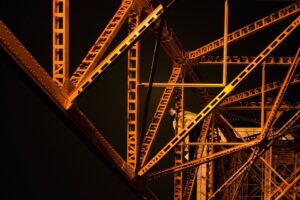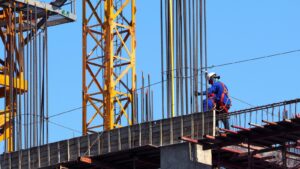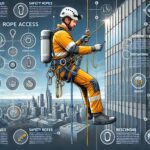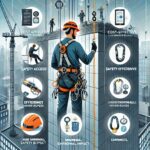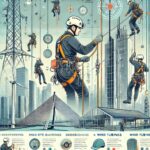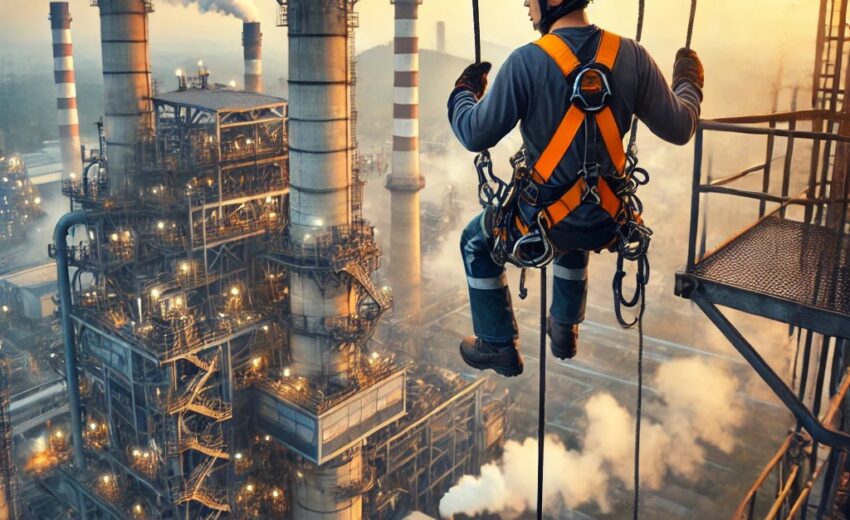
Introduction
Rope access is rapidly gaining traction in Sri Lanka as a safe, efficient, and cost-effective method for working at height. With the increasing development of high-rise buildings, industrial structures, and renewable energy projects, the demand for skilled rope access technicians has risen significantly. This method offers a practical alternative to traditional scaffolding and aerial platforms, especially in urban environments where space and time constraints make conventional methods impractical.
Growth of Rope Access in Sri Lanka
Sri Lanka’s construction and maintenance sectors have traditionally relied on scaffolding and cranes for work-at-height tasks. However, the limitations of these conventional methods—such as high costs, extended setup times, and space constraints—have paved the way for rope access. Today, industries such as high-rise building maintenance, telecommunications, oil and gas, and infrastructure development are increasingly adopting rope access techniques.
The growth of the hospitality industry, with its numerous high-rise hotels and commercial buildings, has further driven the demand for rope access services in façade cleaning, glass repairs, and exterior painting. Similarly, Sri Lanka’s rapidly expanding renewable energy sector, particularly wind farms, relies on rope access for turbine maintenance and inspections.
Safety and Certification Standards in Sri Lanka
Safety is a primary concern in the rope access industry. While global standards such as those set by IRATA (Industrial Rope Access Trade Association) and SPRAT (Society of Professional Rope Access Technicians) govern international rope access operations, Sri Lanka is gradually adopting these frameworks to ensure workplace safety. Many rope access service providers in the country are working towards IRATA certifications to meet international safety and efficiency standards.
Government regulations and labor safety laws are still evolving in this sector, and companies are increasingly recognizing the need to adhere to international best practices. Training programs and certification courses are becoming more available to equip Sri Lankan technicians with the necessary skills to perform rope access work safely and professionally.
Key Industries Benefiting from Rope Access
- Construction and Building Maintenance – High-rise buildings, hotels, and office complexes require frequent façade cleaning, painting, and structural repairs, making rope access an ideal solution.
- Telecommunications – With Sri Lanka’s growing network infrastructure, rope access is used to install and maintain telecom towers in urban and rural areas.
- Oil and Gas Sector – Refineries, offshore oil rigs, and storage tanks require periodic inspections and maintenance, which rope access facilitates efficiently.
- Renewable Energy – Wind turbines and solar panel installations benefit from rope access for inspection, maintenance, and repairs.
- Infrastructure Development – Bridges, dams, and large-scale infrastructure projects use rope access for inspections and repair work, ensuring the longevity of vital structures.
Cost-Effectiveness and Environmental Impact
Rope access is significantly more cost-effective than traditional access methods, reducing both material and labor costs. The minimal use of heavy machinery and temporary structures also lowers the environmental impact, aligning with Sri Lanka’s growing emphasis on sustainability. Companies opting for rope access can cut operational costs while maintaining high safety and efficiency standards.
Conclusion
As Sri Lanka continues to develop its urban and industrial landscape, rope access is becoming an essential solution for work at height. Its cost-effectiveness, safety, and adaptability make it a preferred choice for businesses looking to optimize maintenance and construction operations. With the adoption of global safety standards and increased training programs, rope access is poised to play a crucial role in Sri Lanka’s future infrastructure and industrial growth.

